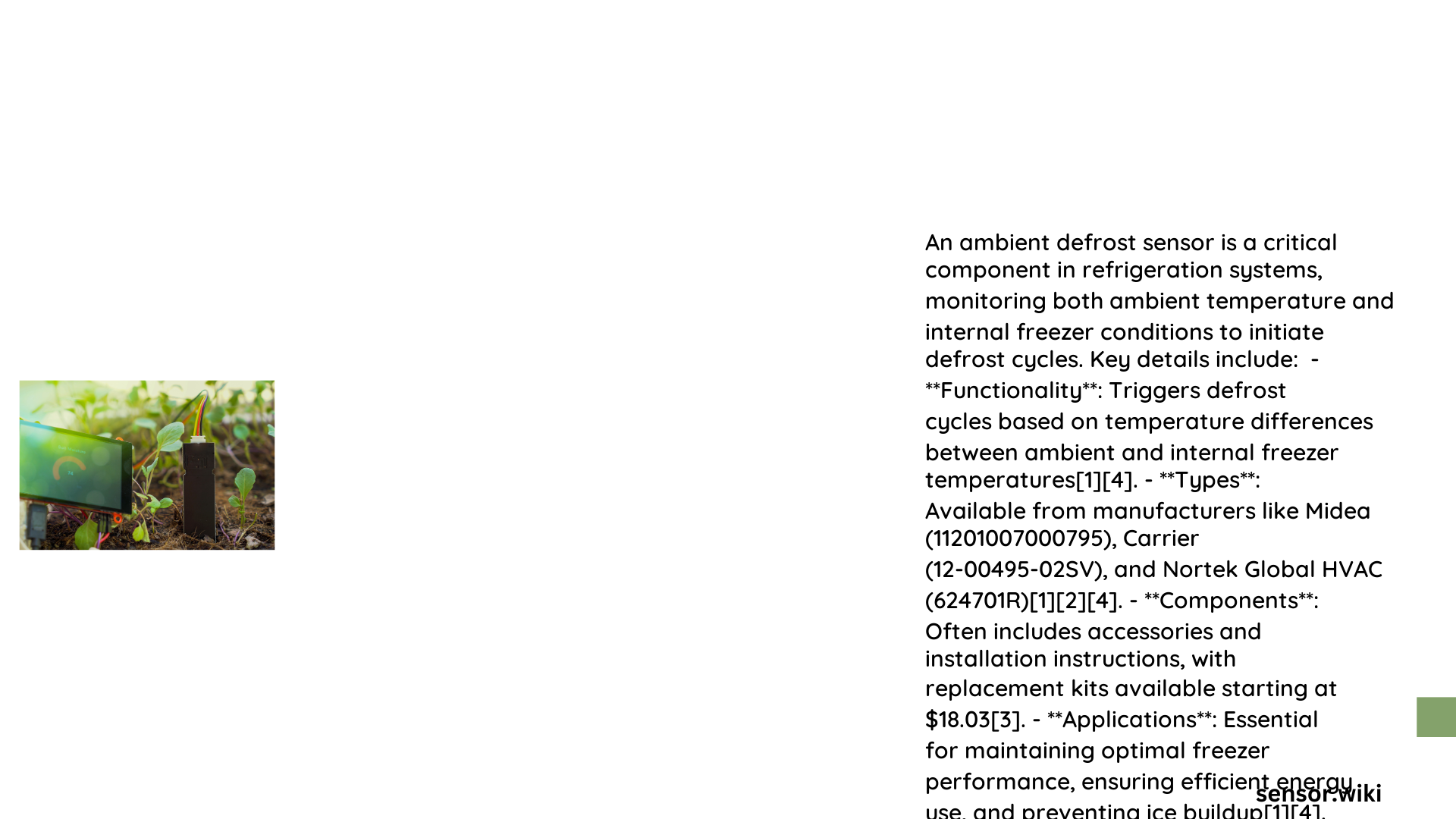An ambient defrost sensor is a critical temperature monitoring device used in heat pumps and refrigeration systems to detect frost buildup and initiate defrost cycles. These precision sensors, typically utilizing NTC thermistors, provide real-time temperature data that enables efficient system performance, prevents equipment damage, and maintains optimal operational conditions across various environmental challenges.
What Makes Ambient Defrost Sensors Essential?
Ambient defrost sensors play a pivotal role in maintaining the efficiency and longevity of refrigeration and heat pump systems. By detecting temperature variations and frost accumulation, these sensors trigger critical maintenance processes that prevent system degradation.
How Do Ambient Defrost Sensors Function?
Thermistor Technology
Ambient defrost sensors predominantly use Negative Temperature Coefficient (NTC) thermistors, which exhibit unique electrical characteristics:
| Temperature (°F) | Resistance (Ω) |
|---|---|
| 0°F | 85,378 |
| 30°F | 34,563 |
| 40°F | 26,103 |
| 50°F | 19,902 |
Key Performance Characteristics
- Response Time: 5-60 seconds
- Operating Temperature Range: -20°C to 60°C
- Accuracy: ±3°F tolerance
What Are the Primary Applications?
- Heat Pump Systems
- Detect frost accumulation on outdoor coils
- Initiate automatic defrost cycles
-
Prevent system inefficiencies
-
Refrigeration Equipment
- Monitor ambient temperatures
- Trigger maintenance protocols
- Ensure consistent cooling performance
How to Install Ambient Defrost Sensors?
Recommended Installation Practices
- Mount on outdoor unit tubes
- Use stainless steel mounting clips
- Ensure direct thermal contact
- Protect from physical damage
What Troubleshooting Techniques Exist?
Diagnostic Procedures
- Use multimeter for resistance checks
- Verify voltage readings
- Test sensor response in controlled environments
- Compare resistance values with manufacturer specifications
What Tools Are Recommended?
Essential diagnostic equipment includes:
– Digital multimeter
– Temperature calibration tools
– Resistance measurement devices
– Thermal imaging camera (optional)
What Potential Challenges Might Occur?
Common issues include:
– Inaccurate temperature readings
– Sensor resistance drift
– Environmental interference
– Mechanical damage
How to Maintain Optimal Performance?
- Regular calibration
- Annual professional inspection
- Protect from extreme environmental conditions
- Replace sensors according to manufacturer recommendations
Technical Specifications Summary

- Sensor Type: NTC Thermistor
- Resistance Range: 10,000 Ω to 85,378 Ω
- Temperature Sensitivity: High precision
- Mounting Options: Flexible installation
Expert Recommendations
Professionals should prioritize:
– Understanding specific system requirements
– Using manufacturer-recommended sensors
– Implementing preventive maintenance strategies
Conclusion
Ambient defrost sensors represent a critical technological solution in modern refrigeration and HVAC systems, providing intelligent temperature monitoring and system protection.
